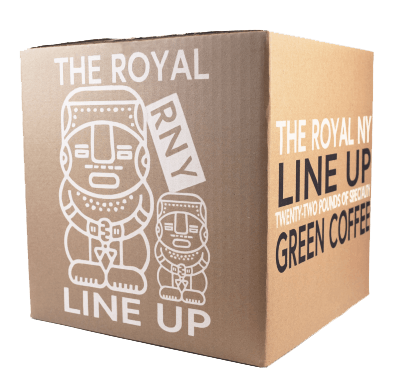No products in the cart.
Africa Profile
| Roasting Guidance | We suggest using high heat application, hitting first crack at much faster than average timing, and ending the roast at a light temperature. |
| Flavor Profile | This roast will produce coffee that is complex, sweet, and tart. The coffee will be light-bodied with lively acidity, fruity sweetness, and delicate florality. |
| Altering the Roast | For more sweetness and body, maintain a higher heat application through first crack for a sightly darker roast. For lower acidity, take longer to reach first crack and extend the development time. |
| Blend and Brew | These coffees are ideal on their own as a Single-Origin offering. They may be used to add complexity to some more sophisticated blends. Brew using a chemex for maximum nuance and acidity. |
These tests were completed using a Diedrich IR-5 roaster. We considered 7:30 “Quick” to 1st Crack and 9:00 “slow. ”Short” roasts are 9:00 and under, “Long” roasts are 12:00 and above.
| Roasting Guidance | We suggest using high heat application, hitting first crack at slightly faster than average timing, and ending the roast at a light temperature. |
| Flavor Profile | This roast will produce coffee that is sweet and complex. The coffee will be light-bodied with vibrant acidity, and fruity sweetness |
| Altering the Roast | For more sweetness and body, maintain a higher heat application through first crack for a sightly darker roast. For lower acidity, take longer to reach first crack and extend the development time. |
| Blend and Brew | These coffees are ideal on their own as a Single-Origin offering. They may be used to add complexity to some more sophisticated blends. Brew using a chemex for maximum nuance and acidity. |
These tests were completed using a Diedrich IR-5 roaster. We considered 7:30 “Quick” to 1st Crack and 9:00 “slow. ”Short” roasts are 9:00 and under, “Long” roasts are 12:00 and above.
| Roasting Guidance | We suggest using high heat application, hitting first crack at faster than average timing, and ending the roast at a light temperature. |
| Flavor Profile | This roast will produce coffee that is vibrant and complex. The coffee will be light-bodied with lively acidity, and refined sweetness. |
| Altering the Roast | For more sweetness and body, maintain a higher heat application through first crack for a sightly darker roast. For lower acidity, take longer to reach first crack and extend the development time. |
| Blend and Brew | These coffees are ideal on their own as a Single-Origin offering. They may be used to add complexity to some more sophisticated blends. Brew using a chemex for maximum nuance and acidity. |
These tests were completed using a Diedrich IR-5 roaster. We considered 7:30 “Quick” to 1st Crack and 9:00 “slow. ”Short” roasts are 9:00 and under, “Long” roasts are 12:00 and above.
| Roasting Guidance | We suggest using high heat application, hitting first crack at slightly longer than average timing, and ending the roast at a light-medium temperature. |
| Flavor Profile | This roast will produce coffee that is sweet and fruity. The coffee will be medium-bodied with berry acidity and rich sweetness. |
| Altering the Roast | For more sweetness and body, maintain a higher heat application through first crack for a sightly darker roast. For lower acidity, take longer to reach first crack and extend the development time. |
| Blend and Brew | These coffees are ideal on their own as a Single-Origin offering. They may be used to add fruitiness to some more sophisticated blends. Brew using a V60 for maximum body and sweetness. |
These tests were completed using a Diedrich IR-5 roaster. We considered 7:30 “Quick” to 1st Crack and 9:00 “slow. ”Short” roasts are 9:00 and under, “Long” roasts are 12:00 and above.
| Roasting Guidance | We suggest using medium heat application, adjusting to hit first crack at slightly longer than average timing, and ending the roast at a dark temperature. |
| Flavor Profile | This roast will produce coffee that is rich and robust. It will be heavy-bodied with low acidity and some roast character. |
| Altering the Roast | For more acidity and less roast character, reach first crack more quickly and end the roast at a lighter temperature with less development. |
| Blend and Brew | These coffees are ideal as the base flavor note in a darker roast espresso or house blend. Brew using a French Press for maximum body. |
These tests were completed using a Diedrich IR-5 roaster. We considered 7:30 “Quick” to 1st Crack and 9:00 “slow. ”Short” roasts are 9:00 and under, “Long” roasts are 12:00 and above.








